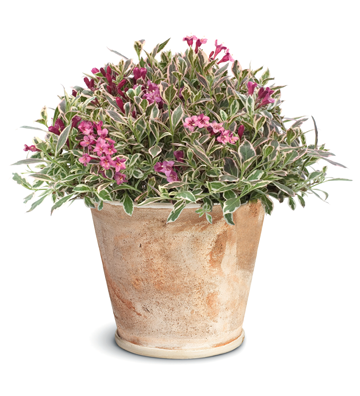
One of the great benefits of having a job such as mine is to be fortunate enough to discover a new plant developed by a breeder, seeing the original plant and then actually getting to see that same cultivar out and about in residential landscapes.
It has been about eight years since I saw my first Limelight Hydrangea, and now with paniculata hydrangeas in full bloom, I see this variety in yards wherever I go. My neighbour about six houses down, whom I don’t know, planted about six Limelights around her front porch. Even my wife Tracy beams with pride when the Limelight in our front yard is in bloom. Every day, people walking by are compelled to stop and ask its name.
There is no doubt that Limelight is a breath-taking, one in a million plant, but surprisingly there were many professional nursery people that did not recognize it as such when they first saw it. About the second year we had plant at our nursery, and before the plant was introduced, we had a visit from the Ohio Nursery Association “Plant Selection Committee.” Made up of about six well respected plants-people, the group identifies plants that merit growing and recommends them to the trade. Well here they were, on the nursery looking at about 200 three gallon limelight plants in full bloom and none of the hardly took notice. "Who wants a green flowered Hydrangea" was their comment. The famous Plantsman, Mike Dirr has nothing good to say about Limelight, while at the same time sales of Limelight continue to climb and consumer forums like GardenWeb.com are littered with personal accolades for the plant.
It has been about eight years since I saw my first Limelight Hydrangea, and now with paniculata hydrangeas in full bloom, I see this variety in yards wherever I go. My neighbour about six houses down, whom I don’t know, planted about six Limelights around her front porch. Even my wife Tracy beams with pride when the Limelight in our front yard is in bloom. Every day, people walking by are compelled to stop and ask its name.
There is no doubt that Limelight is a breath-taking, one in a million plant, but surprisingly there were many professional nursery people that did not recognize it as such when they first saw it. About the second year we had plant at our nursery, and before the plant was introduced, we had a visit from the Ohio Nursery Association “Plant Selection Committee.” Made up of about six well respected plants-people, the group identifies plants that merit growing and recommends them to the trade. Well here they were, on the nursery looking at about 200 three gallon limelight plants in full bloom and none of the hardly took notice. "Who wants a green flowered Hydrangea" was their comment. The famous Plantsman, Mike Dirr has nothing good to say about Limelight, while at the same time sales of Limelight continue to climb and consumer forums like GardenWeb.com are littered with personal accolades for the plant.
How it is that the professional get it so wrong? Time and time again, when we introduce a new plant, nursery people respond with scepticism. When we introduced Weigela Wine & Roses, I was told it was no better than ‘Java Red’ and that no one would bother changing.
The problem with nursery people is that they look at a plant as a horticulturist. With four years of college, and years of on the job experience, we become cynical; we need to extend our opinion, finding fault with every new we plant meet - after all we are the experts. It takes a concerted effort to change the way we look at plants so that view that as a consumer, in particularly a female consumer. We need to start accessing the positive points of a new variety as well as the negative points. Certainly every plant has its shortcomings. There is no such thing as a perfect plant and we need to understand these weaknesses, but we need also to see beyond them.
We discover numerous new and unusual plants on every trip we take. Every week someone is offering us a new plant. There is no shortage of new plants. Hunting for new plants is not the difficult part of the job, it’s understanding which new plants are worthy of introduction that is difficult. And surprisingly, it is very easy to dismiss or underestimate an exceptional new plant, because we think too much like horticulturists and not enough like consumers.















